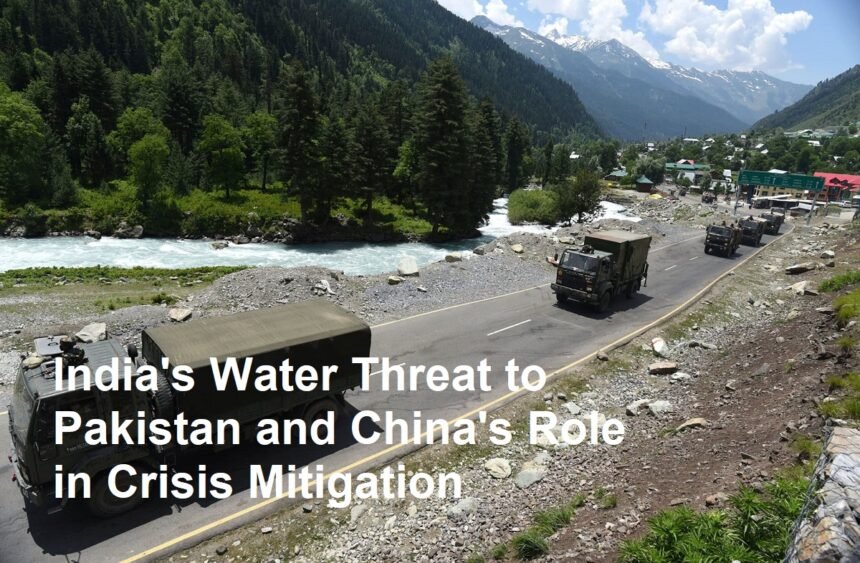In 2025, the long-standing tensions between India and Pakistan have escalated into a critical water dispute, with India threatening to block Pakistan’s access to the Indus River system. This river system is vital for Pakistan’s agriculture, energy, and overall water security. At the same time, China has stepped in to support Pakistan by accelerating infrastructure projects like the Mohmand Dam to help mitigate the looming water crisis. This article provides a detailed overview of the situation, including India’s suspension of the Indus Waters Treaty, China’s involvement, and the broader regional implications.
Background: The Indus Waters Treaty and Its Suspension
The Indus Waters Treaty (IWT), signed in 1960, has been a cornerstone of water-sharing between India and Pakistan for over six decades. It allocates the waters of the Indus River and its tributaries between the two countries, with Pakistan receiving the majority of the water flow. The treaty has survived multiple conflicts and served as a rare example of cooperation in an otherwise tense bilateral relationship.
However, in 2025, India announced the suspension of the treaty, citing security concerns and alleged violations by Pakistan. More alarmingly, New Delhi has threatened to block or significantly reduce the water flow from the Indus River into Pakistan. This move has raised serious alarms in Islamabad, where the Indus River system supports approximately 90% of the country’s agriculture and is crucial for hydroelectric power generation.
India’s Strategic Water Threat
India’s threat to block water supplies is seen as a strategic lever in its broader geopolitical contest with Pakistan. The Indus River originates in the Indian-administered region of Jammu and Kashmir, giving India control over the headwaters. By restricting water flow, India could potentially exert significant pressure on Pakistan’s economy and food security.
Key points about India’s stance:
- Suspension of the IWT:India’s suspension of the treaty marks a significant departure from decades of water diplomacy.
- Water Blockade Threat:India has warned of blocking water supplies, which could reduce Pakistan’s water availability by up to 40%.
- Security Justifications:India claims the move is necessary due to Pakistan’s alleged support for militant activities in Kashmir.
China’s Role: Supporting Pakistan Amid Crisis
In response to India’s water threat, China has intensified its support for Pakistan, particularly through infrastructure projects aimed at enhancing water storage and management. The most notable is the accelerated construction of the Mohmand Dam on the Swat River, a tributary of the Indus.
China’s involvement includes:
- Mohmand Dam Project:Designed to increase Pakistan’s water storage capacity by approximately 1.3 million acre-feet, the dam will help regulate water flow and provide hydroelectric power.
- Strategic Partnership:China’s support is part of its broader strategic alliance with Pakistan, including the China-Pakistan Economic Corridor (CPEC).
- Water Crisis Mitigation:The dam and other projects aim to reduce Pakistan’s vulnerability to water shortages caused by upstream restrictions.
Regional and Global Implications
The water dispute between India and Pakistan is not just a bilateral issue but has wider regional and global consequences:
Humanitarian Impact
- Agriculture:Pakistan’s agriculture sector, which employs over 38% of the labor force, depends heavily on Indus waters. Reduced water flow could lead to crop failures and food insecurity.
- Energy:Hydroelectric power generation in Pakistan could be severely affected, leading to energy shortages.
- Public Health:Water scarcity can exacerbate health problems, especially in rural areas.
Security Concerns
- Escalation Risk:Water disputes have the potential to escalate into broader military conflicts, especially given the already tense relations between India and Pakistan.
- Diplomatic Strain:The suspension of the IWT undermines decades of diplomatic efforts and trust-building.
International Response
- Calls for Dialogue:International organizations and neighboring countries have urged both India and Pakistan to resume dialogue and uphold the treaty.
- China’s Strategic Position:China’s active role in supporting Pakistan highlights the geopolitical stakes in South Asia, with implications for regional stability.
Conclusion
India’s suspension of the Indus Waters Treaty and its threat to block water supplies to Pakistan represent a serious escalation in bilateral tensions with far-reaching consequences. China’s accelerated support through infrastructure projects like the Mohmand Dam underscores the strategic importance of water security in South Asia. The coming months will be critical in determining whether these developments lead to increased conflict or pave the way for renewed negotiations and cooperation.
Sustained dialogue, diplomatic engagement, and regional cooperation are essential to manage shared water resources peacefully and ensure the well-being of millions dependent on the Indus River system.









